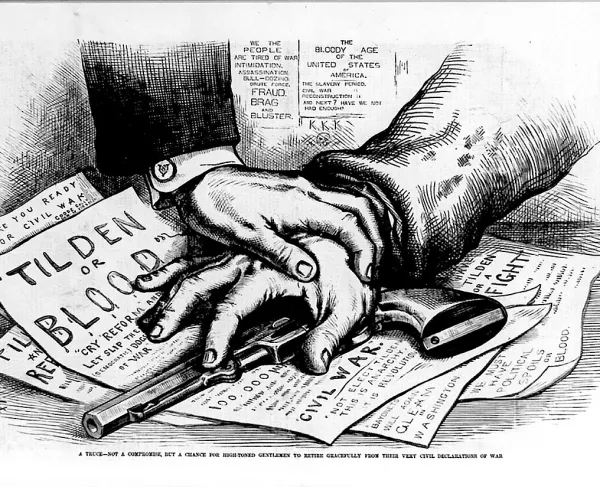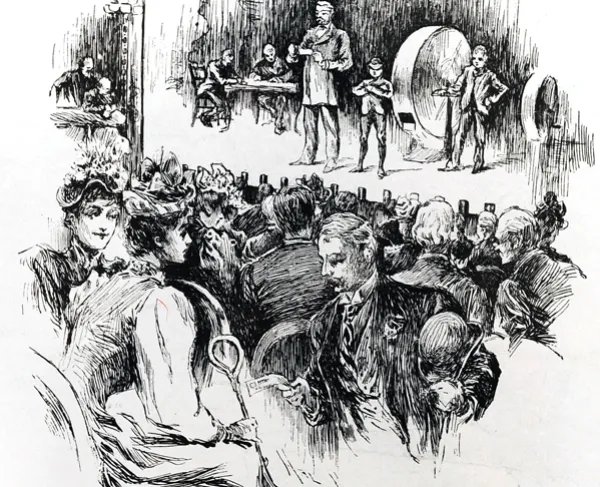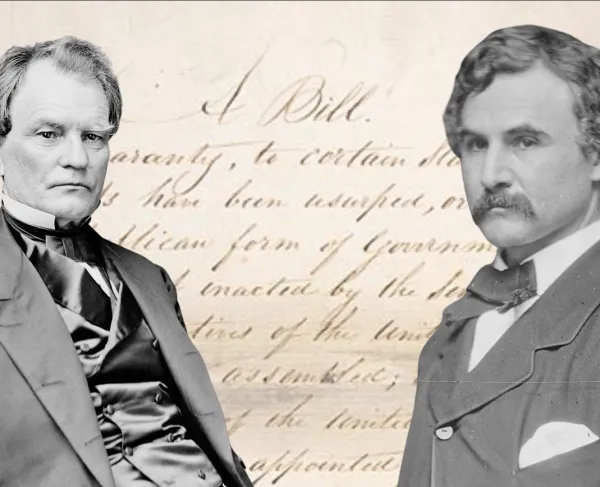
Reconstruction of the South after the Civil War was underway before the war had officially ended. On December 8, 1863, President Abraham Lincoln declared the Proclamation of Amnesty and Reconstruction. It gave the Confederates who swore allegiance to the United States a pardon for taking part in the war, as well as restoration of their property. It was known as the 10 Percent Plan, as it only required ten percent of a Confederate state’s voters to undergo the oath of allegiance to begin the state’s readmission to the Union.
By early 1864, Lincoln decided to implement the 10 Percent Plan in Louisiana, a state that had been under Union occupation since 1862—and which contained the largest city in the south, New Orleans. By March of 1864, Michael Hahn was elected Governor of Louisiana. Hahn was a moderate Republican and made an impactful step forward for readmitting Louisiana back into the Union. However, Hahn was considered to be a puppet governor mimicking whatever Lincoln wanted him to do. Radical Republicans and Democrats did not favor Hahn for his ineffectiveness to govern.

Lincoln wanted to implement this 10 Percent Plan for the rest of the Confederate states. However, on April 15, 1865, Lincoln died after being shot by the assassin, John Wilkes Booth. The plan for reconstructing the former Confederate states laid upon the shoulders of President Andrew Johnson, Lincoln’s vice-president, who was a southern Democrat from Tennessee, but who had remained loyal to the United States. Within weeks, Johnson began to implement his version of Reconstruction. This involved amnesty to former Confederate soldiers, generals, officeholders, and citizens. He also began to redistribute land back to white southerners who had lost the land in the war. By the fall of 1865, many southern states began to elect former Confederates back into public office in all levels of government. These Confederates began to implement “Black Codes” to further subjugate the freed black population. The laws involved restrictions on the black population and amounted to a new version of slavery. By the end of 1865, former Confederates began to take their seats in Congress and many moderate and radical Republicans refused to allow the newly elected members to take their seats. The Union army was also quickly demobilized, beginning with a strength of one million at the end of the war to about 150,000 soldiers by the end of 1865.
By June 13, 1866, Congress sent the Fourteenth Amendment to be ratified by the states. The amendment gave all Americans citizenship no matter if they were under the condition of previous servitude. The rest of 1866 witnessed a great deal of violence in the southern states including New Orleans, Louisiana, and Memphis, Tennessee. In 1867, Congress began to pass legislation towards a Republican Reconstruction against President Johnson, leaving Johnson with little ability to veto. Johnson is also the first President to be impeached in 1867 for his violation of the Tenure of Office Act which protected government officials that Congress had approved of against the removal of them by the President. Johnson narrowly escapes conviction of his actions by one vote in 1868.

The year 1868 was dominated by the Presidential Election of 1868 in which Ulysses S. Grant, the former Union general-in-chief, won against Democratic candidate Horatio Seymour in a landslide victory. Throughout the year, Arkansas, Louisiana, Florida, North Carolina, and South Carolina are readmitted into the Union. Virginia, Mississippi, and Texas are the last remaining states to be readmitted and are unable to vote in the 1868 Presidential Election. In 1869, Congress passed the Fifteenth Amendment, which gave all men the right to vote and cannot be denied on the basis of “race, color, or previous condition of servitude.” In April of 1869, the Texas v. White decision is made and declared that the act of secession from the Union is illegal.
In 1870, President Grant proposed a treaty to annex an island in the Caribbean Islands known as Santo Domingo for any freed slaves that wanted to leave the United States. The proposal failed. From January to July, Virginia, Mississippi, Texas, and Georgia are officially readmitted to the Union. On February 3, the Fifteenth Amendment is ratified. Throughout 1871, President Grant sent federal soldiers into the south to protect freed slaves from widespread violence from the Ku Klux Klan, an extremist reactionary group. Congress began hearing testimonies from victims of the Klan’s violence. In 1872, Grant is reelected for his second term.
The year 1873 marked the panic of 1873 which was an economic downturn that spread into the stock exchange, leading to widespread unemployment throughout the country. With widespread unemployment, the Democrats began to retake control of the federal government. The midterm elections of 1874 marked a turning point for Reconstruction as more Democrats were elected into office. In 1875, the Republicans made one last act that prohibited segregation in all public spaces. The law was only effective until 1883 when the Supreme Court voided the act.

The year 1877 marked the last year of Reconstruction for the nation. The election of 1877 saw the ascension of Republican candidate Rutherford B. Hayes. Following the election, both Hayes and Democratic candidate Samuel Tilden claimed victory as well. Hayes could claim the Presidency if he were to halt all Reconstruction policies. President Hayes agreed and was officially elected President.
Reconstruction marked a promising point in the nation’s history. After a great deal of conflict in the federal and state governments, only under President Ulysses S. Grant the reconstruction of the south allowed to prosper and thrive. After 1877, reconstruction was officially over. State governments primarily in the southern states instituted segregation and resulted in the Jim Crow Era. Many of the laws in place, primarily segregation, would remain codified in law until 1965. Reconstruction marked a turning point in the nation’s history. With the ratification of the 14th and 15th Amendments, the country could begin to heal from the Civil War and promote the suffrage of formerly enslaved men.
Further Reading
- Reconstruction Updated Edition: America's Unfinished Revolution, 1863-1877 By: Eric Foner
- Reconstruction: A Concise History By: Alan C. Guelzo
- Birthright Citizens: A History of Race and Rights in Antebellum America By: Maratha Jones





